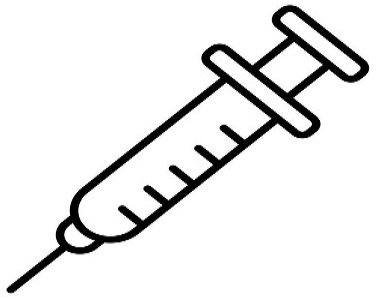Leuprorelin Acetate
Indications
For treatment of prostate cancer, endometriosis, uterine fibroids and premature puberty
Pharmacology
Leuprorelin is a gonadotropin-releasing hormone (GnRH) analogue. Following an initial stimulation of gonadotrophins, continuous admin of Leuprorelin leads to down regulation of GnRH receptors and subsequently reduces pituitary gonadotrophin secretion. Reduced gonadotrophin levels lead to inhibition of sex hormone (testosterone and oestrogen) production. Within 2-4 wk after treatment initiation, testosterone levels in male may be reduced to below castrate threshold.
Dosage And Administration
Adult: Palliative treatment of advanced prostate cancer: 1 mg as single daily dose by SC inj. Depot preparations may be given by IM or SC route, dosage and route may differ between different brands and countries. In the UK: As depot preparations: 3.75 mg every mth as single IM/SC inj; or 11.25 mg every 3 mth via SC inj. In the US: As depot preparations: 7.5 mg every mth, or 22.5 mg every 3 mth, or 30 mg every 4 mth via IM/SC inj depending on the preparations; or 45 mg every 6 mth via SC inj.
Endometriosis: As depot preparations: 3.75 mg every mth given as a single IM/SC inj or 11.25 mg every 3 mth as IM depot Inj. Initiate treatment during the 1st 5 days of menstrual cycle up to 6 mth. May be used with norethindrone acetate 5 mg daily for initial management of endometriosis and for management of recurrence symptoms. Duration of retreatment: Should not exceed one additional 6 mth course.
Uterine fibroids: As depot preparations: In combination with iron therapy for women with anaemia due to uterine fibroids, 3.75 mg every mth given as a single IM/SC inj or 11.25 mg every 3 mth as IM Inj. Treatment duration: Usually up to 3 mth.
Preparation for intrauterine surgery: Endometrial preparation prior to intrauterine surgery: As depot preparations: 3.75 mg as a single inj via IM/SC given 5-6 wk before the procedure; therapy should be initiated during days 3-5 of the menstrual cycle.
Child: Precocious puberty: As aqueous soln inj: Initial: 50 mcg/kg daily by SC inj, may be titrated upwards by 10 mcg/kg/day if total down-regulation is not achieved. As depot preparations: Initial: 0.3 mg/kg/dose (minimum dose: 7.5 mg) given every 4 wk via IM inj; which equates to children ≤25 kg: 7.5 mg; >25-37.5 kg: 11.25 mg and >37.5 kg: 15 mg given every 4 wk. Maintenance: May titrate dose upwards in steps of 3.75 mg every 4 wk if down-regulation is not achieved. Consider discontinuing therapy before age 11 (females) and age 12 (males).
Contraindications
Pregnancy, lactation; hypersensitivity to GnRH, GnRH agonist analogs or product excipients; undiagnosed abnormal vaginal bleeding.
Side Effects
Treatment of precocious puberty: General pain, headache, acne, rash, seborrhoea, emotional lability, vaginitis, vaginal bleeding vaginal discharge
Treatment of prostate cancer: Transient worsening of signs and symptoms (usually increase in bone pain), ECG changes, high blood pressure, peripheral oedema, anorexia, constipation, nausea, vomiting, anaemia, myalgia, dizziness, general pain, headache, insomnia or sleep disorder, sinus congestion, urinary frequency/urgency, haematuria, UTI, asthaenia, physiological effects of decreased testosterone (e.g. gynaecomastia, breast tenderness, decreased testicular size, hot flashes, impotence).
Treatment of endometriosis and uterine fibroids treatment: General pain, headache, asthaenia, nausea, vomiting, oedema, weight changes, acne, hirsutism, dizziness, insomnia, sleep disturbance, paraesthesias, skin reactions, effects of hypoestrogenism such as hot flashes, joint disorder, myalgia, decreased libido, depression, emotional lability, nervousness, breast tenderness, vaginitis.
Pregnancy And Lactation
Category X: Studies in animals or human beings have demonstrated foetal abnormalities or there is evidence of foetal risk based on human experience or both, and the risk of the use of the drug in pregnant women clearly outweighs any possible benefit. The drug is contraindicated in women who are or may become pregnant.
Precautions And Warnings
Vary inj site periodically. May cause transient elevation of testosterone levels during the first 1-2 wk, which may lead to worsening or onset of new symptoms (e.g. bone pain, neuropathy, haematuria) in prostate cancer patients. Ureteral obstruction and spinal cord compression have been reported; closely monitor patients with urinary obstruction and/or metastatic vertebral lesion. Leuprorelin is associated with increased risk of diabetes and certain CV diseases (heart attack, sudden cardiac death, stroke) when used in men for treatment of prostate cancer. For prostate cancer, monitor response by testosterone and prostate-specific antigen (PSA) levels. For precocious puberty in children, monitor response by GnRH stimulation test sex steroid levels 1-2 month after treatment initiation. Leuprorelin usually inhibits ovulation and stops menstruation in women, but does not incur contraception, non-hormonal contraception should be used as pregnancy is contraindicated. May cause adverse reactions associated with hypoestrogenism and loss in bone density.
Therapeutic Class
Drugs acting on the Uterus, Drugs affecting (inhibiting) gonadotrophin
